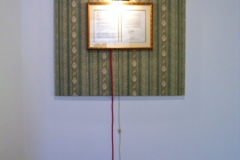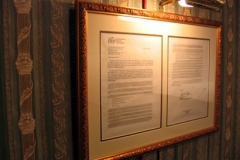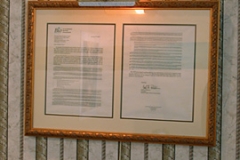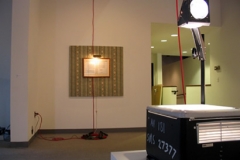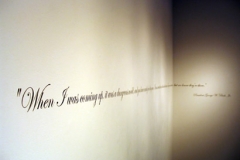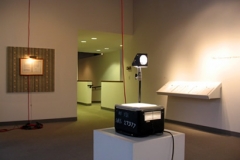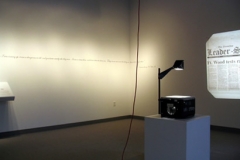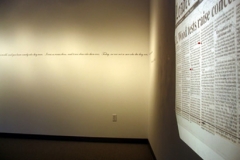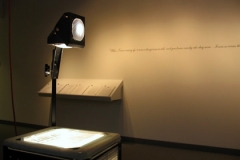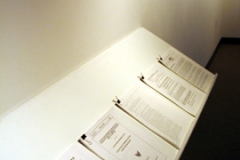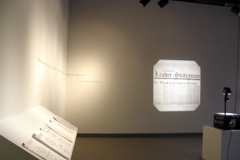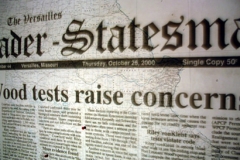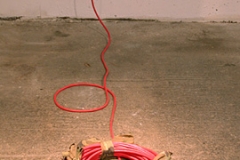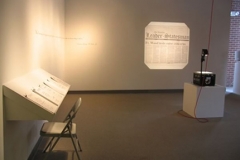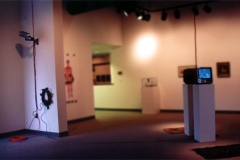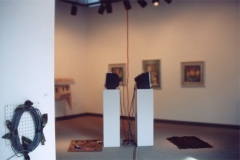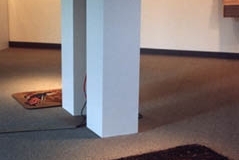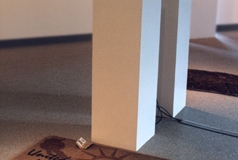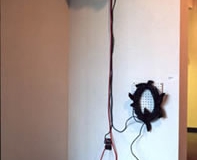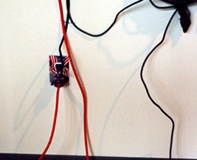Thou God Seest Me: Some Gathered Thoughts for A Short Film About War. Mark Cooley. Furtherfield.org
E pluribus unum
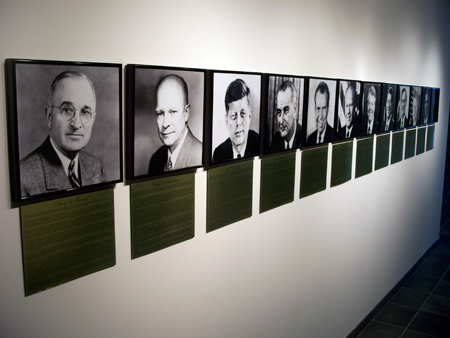
E pluribus unum
2004 – 2008
online version
“If the Nuremberg laws were applied, then every post-war American president would have been hanged.” – Noam Chomsky
“In 1971, Telford Taylor, the chief US prosecutor at the post-World War II Nuremberg Tribunal, cited the ‘Yamashita’ case as grounds for indicting (General) Westmoreland. Following the war, a US Army Commission had sentenced Japanese General Tomayuki Yamashita to be hung for atrocities committed by his troops in the Philippines. The Commission held that as the senior commander, Yamashita was responsible for not stopping the atrocities. The same ruling could of course apply to General Powell and General Schwarzkopf. Yamashita, in his defense, presented considerable evidence that he had lacked the communications to adequately control his troops; yet he was still hung. Taylor pointed out that with helicopters and modern communications, Westmoreland and his commanders didn’t have this problem.” – Rogue State: A Guide to the World’s Only Superpower by William Blum, Common Courage Press, 2000.
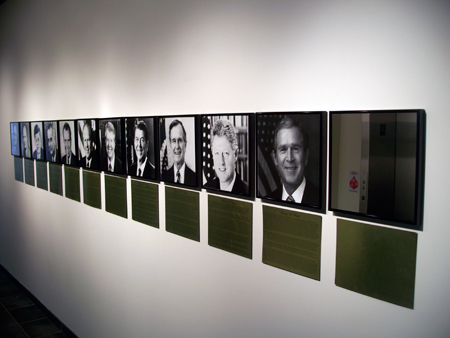
The installation consists of reproductions of post-WWII presidential photographic portraits accompanied by faux engraved plaques listing, in abridged form, 60 years of presidential foreign policy accomplishments. Flagrant violations of international laws are par for the course. Efforts to build empire have always been marked by murder celebrated fanatically as “just and righteous,” and yet we have something that we call “International Law,” including the Charter of the United Nations, Nuremberg Principles, Geneva Conventions, Genocide convention, and many others. In the interest of law, accompanied with the facts of 60 years of US foreign policy, and while using the case of General Tomayuki Yamashita as precedence, we can speculate on how our presidents may have faired if accused of war crimes before an impartial jury.
http://www.exitart.org/site/pub/exit_archive/history/2004.html
The Art of Making Protest Art
The Art of Making Protest Art. The World Socialist Website.
Enduring freedom V.3
Enduring freedom V.3 | 2003
Enduring freedom v.3 – produced for YouGenics an exhibition exploring the social implications of biotechnology. Curator – Ryan Griffis.
Materials: Wall paper, Lamp, Framed document – Biotechnology Industry Organization (BIO)letter to George W. Bush showing support for the “war on terror” and outlining the Biotech industry’s political/economic agenda for 2002.
Wall text – “When I was coming up it was a dangerous world, and you knew exactly who they were. It was us versus them, and you knew exactly who them was. Today, we are not so sure who they are, but we know they’re there” President GW Bush
Overhead projector – Projected newspaper article concerning the public outcry over the military spraying of biological agents at Fort Leonard Wood (90 miles from the site of the exhibition) as part of the current administration’s Project BioShield (supported by BIO).
Congressional records – Transcripts of congressional hearings concerning extensive secret testing of biological and chemical agents on the American public by the Department of Defense, the CIA and other agencies since the 1940’s.
Installation note: The various components of the installation are tied together with the use of red and green extension cords that run up walls and across ceilings to connect the power cords from both the overhead projector and lamp into a single electrical outlet (printed with an American flag motif). The access red and green cords are woven together, coiled and tied with camouflage fabric on the floor below the framed document display.
Comment: As with the study of any cultural representation, a good deal can be learned about a technology’s research and development by addressing the ideology of its patrons. The biotechnology industry and the current administration have expressed their political and economic alignment in the “war on terror” apparently by responding with their own form of terror. The US government’s experimentation with biological weapons is well documented, and so is the government’s commitment to contracting from and passing technologies to the private sector. A little research can begin to tell us what’s in store and who’s buying.
warProductwar
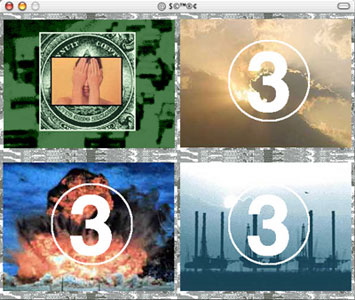
Launch warProductwar | 2002 – 2004
warProductwar is a net project that re-presents a mash of media images and sounds drawing links between US war culture and economic interests. The project makes use of the web’s reputation as an information source, by asking users to engage in extended research based tours of existing sites while engaging in a disorientating and nonlinear browsing experience with provocative juxtapositions of images and sounds. warProductwar is an ongoing meditation and as such remains in a constant state of flux. Broken links and loose ends should be expected. Additions, deletions and changes are frequently pondered and infrequently enacted.
Review – warProductWar. Marc Garrett. Furtherfield.org
Enduring Freedom (the good patriot test)
Enduring Freedom (the good patriot test) | 2002
Dirt – placed on the gallery floor in front of a pedestal holding television 1.
Television 1 – playing a video in which Noam Chomsky analyzes U.S use of terror in the wake of September 11, 2001 attacks on the Pentagon and the World Trade Center.
Door mat – printed with an image of an eagle and text “United We Stand” in red, white and blue. Placed in front of pedestal holding television 2.
Television 2 – displaying a closed circuit video of viewer/participant watching television 1 superimposed with a graphic of a target.Video (surveillance) camera – contains a lens printed with a target and is focused on the viewer/participants watching television 1.
The various power cords needed for the piece are used to tie the components of the installation together. The excess cords are coiled, tied with camouflage printed fabric and connect into a single electrical outlet (printed with an American flag motif).
